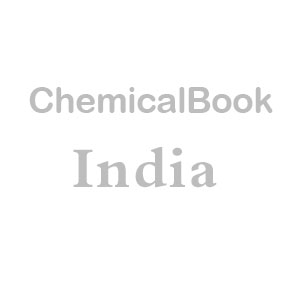Ginger oil
- CAS NO.:8007-08-7
- Molecular Weight: 0
- MDL number: MFCD00147026
- EINECS: 000-000-0
- Update Date: 2025-02-18 18:06:50
What is Ginger oil ?
Chemical properties
Ginger oil and ginger oleoresin are produced from the ginger plant Zingiber
officinale Roscoe (Zingiberaceae).
Ginger oil is produced by steamdistillation of dried, ground rhizomes. It is a light
yellow to yellow liquid with the aromatic, persistent odor of ginger, but lacking the
pungency usually associated with ginger.The citrus note of ginger oil is produced
by citral.
d2525 0.871–0.882; n20D 1.4880–1.4940; α20D ?45 ° to ?28 °; saponification number:
max. 20; soluble in ethanol, solutions are usually turbid.
The major components of the oil are β-sesquiphellandrene and zingiberene.
Chemical properties
Obtained by steam distillation of dried, ground rhizomes The yield is approximately 0 25 to 1.2% The oil has a warm, spicy, aromatic odor; the oil tends to thicken and darken on exposure to air The oil lacks the pungency of the other derivatives.
Physical properties
Ginger oil is a light-yellow to yellow liquid It is soluble in most fxed oils and in mineral oil It is soluble, usually with turbidity, in alcohol, but it is insoluble in glycerin and propylene glycol.
Occurrence
Found in the plant Zingiber officinale Roscoe (Fam. Zingiberaceae) (Guenther, 1952).
The Uses of Ginger oil
Flavor in foods and beverages.
Preparation
By steam distillation of the dried ground rhizomes (Fenarolis' Handbook of Flavor Ingredients, 1971).
Definition
Extractives and their physically modified derivatives. Zingiber officinale, Zingiberaceae.
Essential oil composition
Main constituents include sesquiterpenes, farnesene, methylheptenone, cineol, borneol, geraniol and linalool.
General Description
Ginger oil generally contains sesquiterpene hydrocarbons such as zingiberene, ar-curcumene, β-bisabolene and β-sesquiphellandrene and monoterpenes such as geranial, neral and camphene.
Biochem/physiol Actions
Taste at 30 ppm
Safety Profile
Moderately toxic by ingestion and intraperitoneal routes. A skin irritant. Mutation data reported. When heated to decomposition it emits acrid smoke and irritating fumes.
Properties of Ginger oil
| Boiling point: | 254 °C(lit.) |
| alpha | Angular rotation: -28 to -47° |
| Density | 0.871 g/mL at 25 °C(lit.) |
| refractive index | n |
| FEMA | 2522 | GINGER OIL |
| Flash point: | 150 °F |
| Odor | at 100.00 %. citrus spicy terpenic herbal woody |
| optical activity | [α]20/D 39°, neat |
| EPA Substance Registry System | Oils, ginger (8007-08-7) |
Safety information for Ginger oil
Computed Descriptors for Ginger oil
Ginger oil manufacturer
New Products
3-Iodophenylacetic acid 3-Pyridineacetonitrile, α-hydroxy- 2-Propanamine, 1-chloro-, hydrochloride (9CI) 3-(hexyloxy)-4-(pyridin-3-yl)-1,2,5-thiadiazole 2-Hexyn-1-ol Dibenzo-18-crown-6 Nickel(II) perchlorate hexahydrate, 98% 4-Bromophenylacetonitrile, 95% 3-Bromo-4-fluoroaniline, 97% Sodium tetraborate decahydrate, 98% Palladium(II) acetate, trimer, Pd 99% 4-Bromo-2-chlorotoluene, 97% N N Dimethylformamide Dimethyl Acetal (Dmf Dma) 2,3-Dichloro Benzoyl Cyanide [Side Chain] Bis(2-Chloroethyl) Amine Hydrochloride L-Glutamic Acid Diethyl Ester Hydrochloride 5-(Difluoromethoxy)-2-Mercaptobenzimidazole 1-Ethyl-3-(3-Dimethylaminopropyl)-Carbodiimide Hydrochloride [EDC Hcl] 1,4-Napthoquinone Bromoiodomethane Sodium Bicarbonate Methylene Dichloride (MDC) Ethyl Acetate Indole-3-Carbinol (I3C)Related products of tetrahydrofuran








You may like
-
 Ginger oil 98%View Details
Ginger oil 98%View Details
8007-08-7 -
 8007-08-7 Ginger oil 98%View Details
8007-08-7 Ginger oil 98%View Details
8007-08-7 -
 8007-08-7 98%View Details
8007-08-7 98%View Details
8007-08-7 -
 Ginger Oil 99%View Details
Ginger Oil 99%View Details -
 Ginger oil, natural CAS 8007-08-7View Details
Ginger oil, natural CAS 8007-08-7View Details
8007-08-7 -
 Ginger oil CAS 8007-08-7View Details
Ginger oil CAS 8007-08-7View Details
8007-08-7 -
 Cyclohexane, (2-propynyloxy)- 67967-07-1 98+View Details
Cyclohexane, (2-propynyloxy)- 67967-07-1 98+View Details
67967-07-1 -
 132945-75-6 (S)-1-Boc-3-methanesulfonyloxy-pyrrolidine 98+View Details
132945-75-6 (S)-1-Boc-3-methanesulfonyloxy-pyrrolidine 98+View Details
132945-75-6
